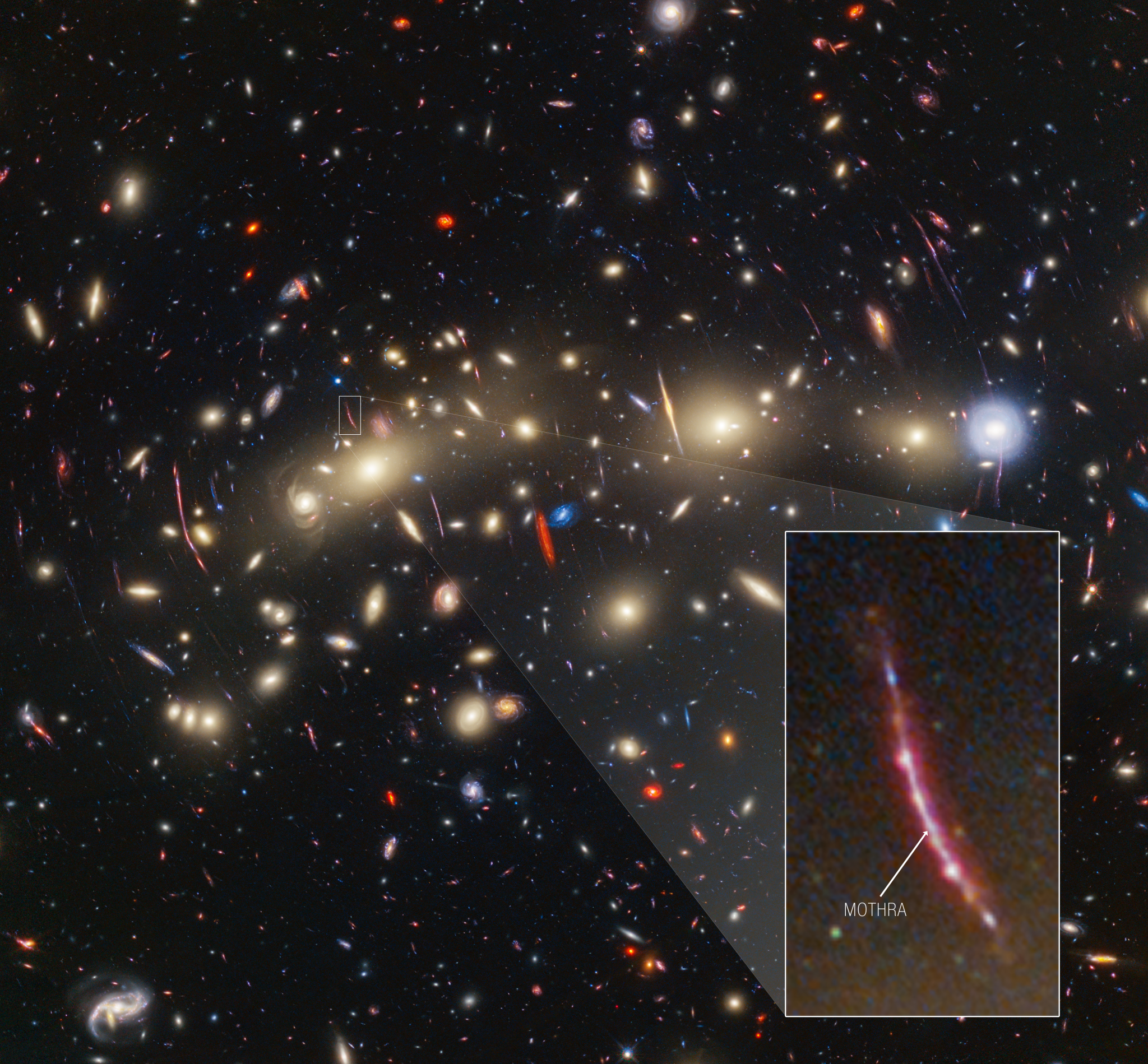
The Hubble Space Telescope and James Webb Space Telescope (JWST) recently collaborated to investigate the galaxy cluster MACS0416. The duo came away with a pretty picture of it too. Approximately 4.3 billion light-years separate the cluster from Earth. This telescope partnership produced a remarkable panchromatic image that combines visible and infrared light, providing one of the most thorough views of the Universe to date.
MACS0416 is a pair of colliding galaxy clusters. These clusters will eventually combine to form a single, more significant entity. The telescopes’ final image is incredibly detailed, showcasing features that would have been impossible to render by either telescope alone. It has several galaxies beyond the cluster and a range of sources that appear to shift with time, most likely due to gravitational lensing, a phenomenon that distorts and magnifies light from far-off sources.
Initially, this cluster was investigated as part of the 2014-launched Hubble’s Frontier Fields mission. The aim was to uncover some of the faintest and youngest galaxies ever detected. With its infrared capabilities, JWST’s contribution significantly enhanced this exploration, allowing a deeper view into the early Universe.
“We are building on Hubble’s legacy by pushing to greater distances and fainter objects,” said Arizona State University’s Rogier Windhorst, principal investigator of the PEARLS program (Prime Extragalactic Areas for Reionization and Lensing Science), which took the Webb observations.
The image’s color coding isn’t just a pretty picture, but also scientifically informative. The shortest wavelengths of light are depicted as blue, the longest as red, and intermediate wavelengths as green. This broad spectrum, ranging from 0.4 to 5 microns, paints a vivid interstellar wall hanging.
The coloration also hints at the distances of the galaxies. Blue galaxies are generally closer and often show intense star formation and were observed by Hubble. The redder ones, often more distant, are typically picked up by Webb. Cosmic dust in some galaxies also absorbs the bluer colors of starlight, making them appear redder.

Dubbed the “Christmas Tree Galaxy Cluster” because of its colorful appearance and internal flickering lights, MACS0416 has proven to be a rich source of discoveries. Researchers observed multiple observation periods in a joint study looking for objects whose brightness changed over time. Of these, they discovered 14 transients. Twelve showed strong gravitational lensing magnification, presumably corresponding to single or multiple-star systems. The researchers assume that the other two transients are supernovae.
One particularly noteworthy transient is a star system in a galaxy that existed roughly three billion years after the Big Bang and magnified at least 4,000 times. Appropriated as “Mothra,” it comes after another previously recognized star dubbed “Godzilla,” a variable star in the Sunburst galaxy. Inspired by the monsters of Japanese movies, both titles are a tribute to their extraordinary brightness and magnification.
Mothra was also discernible in images made by Hubble nine years prior, which the researchers found interesting. A very specific alignment between the foreground galaxy cluster and the background star is needed to magnify a star so greatly. The mutual motions of the star and the cluster should have eventually eliminated that alignment. Scientists believe it could be a globular star cluster but aren’t precisely sure.
“The most likely explanation is a globular star cluster that’s too faint for Webb to see directly,” stated Jose Diego of the Instituto de Física de Cantabria in Spain, lead author of the paper detailing the finding. “But we don’t know the true nature of this additional lens yet.”
The most likely explanation is that there is an additional object within the foreground cluster that is adding more magnification. The team was able to constrain its mass to be between 10,000 and 1 million times the mass of our Sun.
Results from the investigation on MACS0416 have been described in papers submitted for publication in Astronomy & Astrophysics and The Astrophysical Journal. The displayed JWST data was acquired as a component of PEARLS GTO program 1176.


